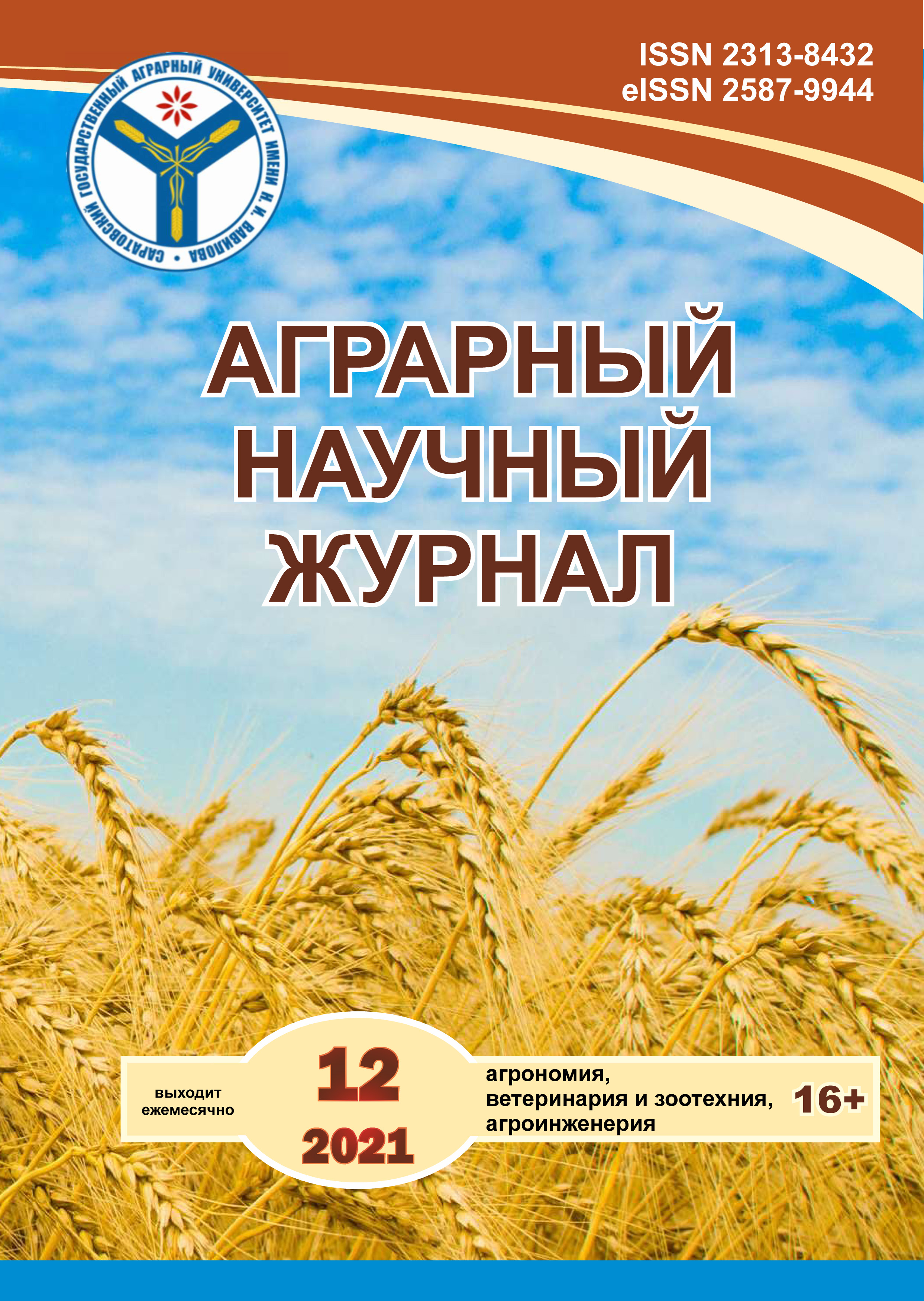Evaluation of the source material for the selection of Siberian millet in the conditions of the Lower Volga region
DOI:
https://doi.org/10.28983/asj.y2021i12pp75-78Keywords:
Siberian millet, variety type, yield, aboveground biomass, breedingAbstract
Methods for early diagnosis of drought tolerance in leguminous crops, based on the screening of physiological indices of resistance to stress, are of great importance for the acceler-ated selection of drought tolerant soybean lines. On the basis of the Volga NIISS, laboratory exper-iments were carried out to assess the physiological and biochemical parameters of drought re-sistance of seedlings of promising soybean samples under conditions of osmotic stress. As a result of studying the indicators of seed germination in a sucrose solution and morphophysiological assessment of seedlings of soybean varieties, samples with a high starting growth rate were identified - 156/2014, D-150 and variety Yuzhanka. A strong direct relationship was established between the indices of seed germination on sucrose solution and the index of root length (r = 0.98), between the index of root length and the dynamics of accumulation of free proline under the influence of a stress factor (r = 0.76). According to a comprehensive assessment of the studied samples, it was found that the greatest decrease in growth processes and the smallest accumulation of free proline were noted in samples VNIIOZ-796/11 and Velichava / 2009. Samples D-150, 156/2014 and variety Yu-zhanka were identified as the most drought-resistant.
Downloads
References
Бекузарова С. А., Лущенко Г. В. Интродукция просовидных культур // Труды по прикладной ботанике, генетики и селекции. 2016. Т. 177 (2). С. 40-46.
Зотиков В. И. Отечественная селекция зернобобовых и крупяных культур // Зернобобовые и крупяные культуры. 2020. № 3(35). С. 12–19. doi: 10.24411/2309-348X-2020-11179.
Зотиков В. И., Вилюнов С. Д. Современная селекция зернобобовых и крупяных культур в России // Вавиловский журнал генетики и селекции. 2021. Т. 25 (4). С. 381-387. doi: 10.18699/VJ21.041.
Донец И. А., Жукова М. П., Володин А. Б. Агробиологическая оценка районированных сортов просовидных культур (чумиза, могар, пайза) в условиях Центрального Предкавказья // Вестник АПК Ставрополья. 2019. № 3 (35). С. 46-50. doi: 10.31279/2222-9345-2019-8-35-46-50.
Goncharov N. P., Kosolapov V. M. Plant breeding is the food security basis in the Russian Federation // Вавиловский журнал генетики и селекции. 2021. 25(4). С. 361-366. doi: 10.18699/VJ21.039.
Жужукин В. И., Горбунов В. С., Родина Т. В., Багдалова А. З., Асташов А. Н. Скрининг сортообразцов чумизы (Setaria italica (L.) p. Beauv. Subsp. Italica) в Нижнем Поволжье // Земледелие. 2018. № 1. С. 42-44.
Анохина Т. А., Чирко Е. М., Кадыров Р. М., Гвоздова Л. И. Cравнительная оценка зерновой продуктивности и параметров адаптивности сортообразцов чумизы // Вести национальной академии наук Белоруссии. Серия аграрных наук. 2013. № 2. С. 69-76.
Методика государственного сортоиспытания сельскохозяйственных культур. М., 2019. 329 с.
Ничипорович А. А. Методические указания по учету и контролю важнейших показателей процессов фотосинтетической деятельности растений в посевах. М., 1969. С. 50-57.
Петухова Е. А., Бессарабова Р.Ф., Халенева Л.Д., Антонова О.А. Зоотехнический анализ кормов. М., 1989. – 239 с.
Доспехов Б.А. Методика полевого опыта (с основами статистической обработки результатов исследований). М., 2012. 352 с.
Downloads
Published
Issue
Section
License
Copyright (c) 2021 The Agrarian Scientific Journal

This work is licensed under a Creative Commons Attribution-NonCommercial 4.0 International License.








